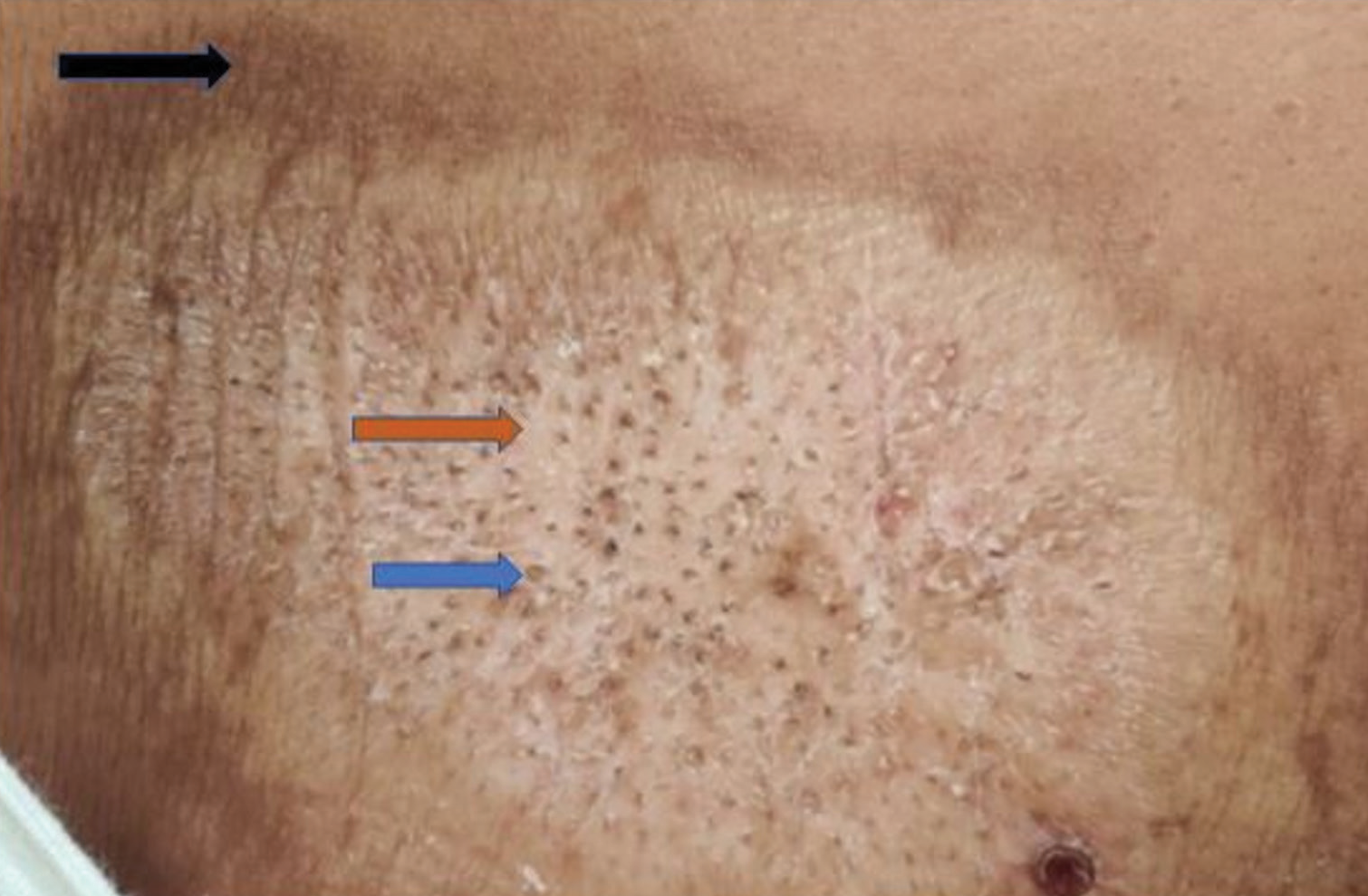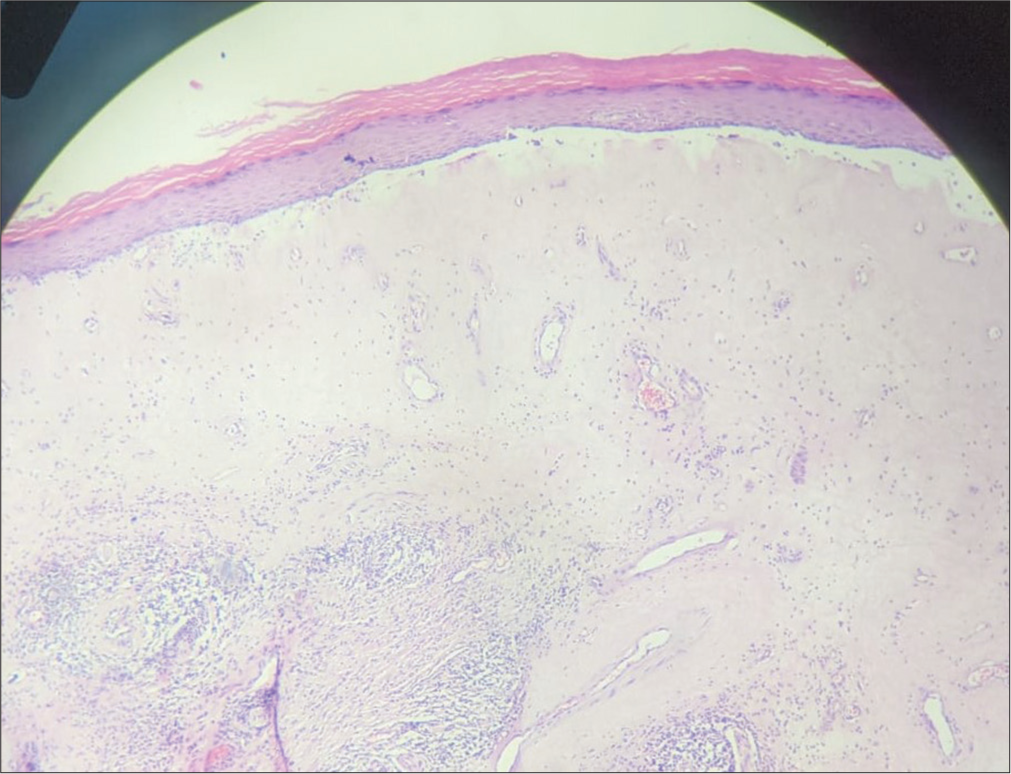Translate this page into:
Hypopigmented plaque with cut dragon fruit appearance

*Corresponding author: Dr. Spandana Devarahalli Krishnamurthy, Department of Dermatology, Venereology and Leprosy, Bangalore Medical College and Research Institute, Bengaluru, Karnataka, India. spandanasinchu@gmail.com
-
Received: ,
Accepted: ,
How to cite this article: Krishnamurthy SD, Khatagave M, Madhu M. Hypopigmented plaque with cut dragon fruit appearance. CosmoDerma. 2024;4:139. doi: 10.25259/CSDM_152_2024
A 32-year-old male presented with a whitish, hypopigmented asymptomatic skin lesion over his upper back for six months, with no similar lesions reported elsewhere. On examination, a 5 × 5 cm hypopigmented atrophic plaque, with follicular plugging and peripheral hyperpigmentation was observed on the right upper back, resembling the appearance of a cut dragon fruit [Figure 1]. Dermoscopy revealed structureless areas, comedo-like openings, white chrysalis-like structures, and telangiectasia. Histopathology showed follicular plugging, epidermal thinning, loss of rete ridges, focal basal cell vacuolization, and edema and hyalinization of the papillary dermis [Figure 2]. After correlating clinical findings, dermoscopic results, and histopathological features, the diagnosis of extragenital lichen sclerosus et atrophicus (LSA) was made.

- Peripheral hyperpigmentation corresponds to the fruit’s surface (black arrow), sclerosis corresponds to the fruit’s pulp (orange arrow), and dots indicate follicular plugging, which corresponds to the fruit’s seed (blue arrow).

- Histopathology showing epidermal thinning, loss of rete ridges, focal basal cell vacuolization, and edema and hyalinization of the papillary dermis (H&E ×40). H&E: Hematoxylin and eosin.
LSA is a chronic inflammatory skin condition affecting both anogenital and extragenital areas. Extragenital LSA lesions typically begin as polygonal, bluish-white papules that merge into atrophic plaques.[1] In the early stages, these plaques often exhibit prominent follicular plugs, which gradually disappear, leaving smooth, porcelain-like plaques behind. The similarity between these follicular plugs and the seeds within the pulp of a cut dragon fruit underscores the natural world’s influence on dermatological terminology.[2]
Ethical approval
The Institutional Review Board approval is not required.
Declaration of patient consent
The authors certify that they have obtained all appropriate patient consent.
Conflicts of interest
There are no conflicts of interest.
Use of artificial intelligence (AI)-assisted technology for manuscript preparation
The authors confirm that there was no use of artificial intelligence (AI)-assisted technology for assisting in the writing or editing of the manuscript and no images were manipulated using AI.
Financial support and sponsorship
Nil.
References
- Extragenital lichen sclerosus et atrophicus. Indian J Dermatol. 2015;60:420.
- [CrossRef] [PubMed] [Google Scholar]
- Extra-genital lichen sclerosus reminiscent of cut dragon fruit. Eur J Pediatr Dermatol. 2020;30:182.
- [Google Scholar]





